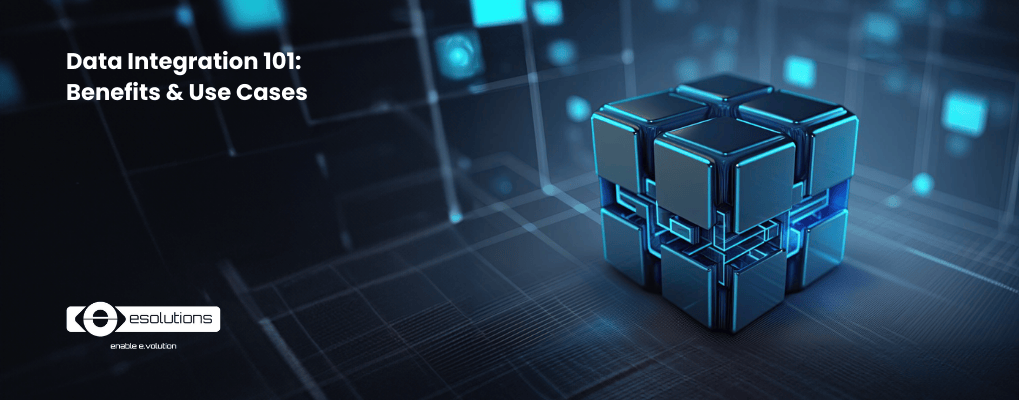
Bringing together data from various sources in a single platform for fast analysis benefits businesses across various industries. Whether you're building a Master Data Management (MDM) system, a Customer Data Platform (CDP), or tackling other industry-specific data challenges, choosing the right platform is key to better business outcomes and growth.
In this blog article, we'll see how a modern data platform works, the benefits of data integration, the diversity of data platforms, and which tools you'd be able to use to start this endeavor.
A modern data platform is built upon several key layers: data ingest, storage and processing, transformation and modeling, advanced analytics and visualization, data serving, and observability. Each layer plays a crucial role in ensuring that data is collected, stored, and transformed into valuable insights while maintaining its integrity and accessibility.
Data ingestion involves collecting information from various external sources and applications, accommodating structured, semi-structured, and unstructured data. The storage and processing layer serves as the backbone of the platform, ensuring that data is securely stored and readily available, preventing the common pitfall of transforming a data lake into a data swamp.
Next, the transformation and modeling layer converts raw data into meaningful formats, setting the stage for advanced analytics and visualization, which empower organizations to make data-driven decisions. The final layer, data serving, ensures that this valuable information is accessible to end-users and applications.
Finally, the essential component of observability allows organizations to monitor their infrastructure and data pipelines, fostering a deeper understanding of their data landscape.
What is the goal of a modern data platform? To build trust in data through a scalable and efficient solution, enabling businesses like yours to leverage data for strategic advantage. And where does data integration fit in? While it takes place mostly during the first layer of ingestion, we can say that data integration plays a key conceptual role across all discussed layers.
Data integration offers loads of benefits that enhance business performance and decision-making. One of the primary advantages is a unified view of all entities and owned data, consolidating data from various sources into a single platform. This creates a complete, consistent, and accessible data environment that ensures better alignment across business units.
With a unified data set, businesses can engage in data-driven decision-making, which leads to overall faster decisions. By making use of a data platform, organizations like yours can gain insights more rapidly, with quicker responses to market changes, customer demands, and other opportunities.
Another key benefit is the optimization of operational processes. By integrating data from various systems, businesses can automate and streamline workflows, reduce manual tasks, and improve efficiency.
Data integration also supports advanced analytics and AI initiatives. With integrated data already at hand, businesses can develop machine learning models that serve as the foundation for more complex AI and ML solutions. This allows you to gain deeper insights, predict trends, and make more proactive decisions.
Lastly, data integration strengthens security, data governance, and compliance. As businesses manage vast amounts of sensitive information, ensuring that proper governance frameworks are in place is key. Integrated data platforms help enforce regulatory compliance, such as with GDPR, HIPAA or other industry-specific ones, by maintaining consistent security measures, audit trails, and access controls.
Let’s take a look at some of the types of data platform organizations may choose to implement:
Master Data Management (MDM) - Centralizes and governs business data to ensure consistency, accuracy, and a single source of truth.
Data Management Platform (DMP) - Collects and organizes various data to support audience segmentation.
Operational Data Platform (ODP) - Enables real-time data processing and analytics to support operational decision-making and improve efficiency across business functions.
Some more specific data platforms are used in various industries, such as:
Industrial IoT Platform - Connects and manages industrial devices and sensors to optimize operational performance and enable predictive maintenance.
Financial Data Hub or Risk Management Platform - Aggregates and analyzes financial data to manage risk, ensure compliance, and optimize financial decision-making.
Healthcare Data Platform - Centralizes patient and medical data to improve care coordination, support analytics, and ensure regulatory compliance in healthcare systems.
Customer Data Platform (CDP) - Consolidates and unifies customer data from multiple sources to enable personalized marketing and improve customer engagement.
Customer Knowledge Platform (CKP) - Leverages advanced analytics and AI to create deep, actionable insights about customers for enhanced personalization and business strategy.
All the platforms in question are designed to collect and integrate data from multiple sources, both internal and external. Whether it is master data from various departments (MDM), customer data across marketing channels (CDP), or IoT data from machines (Industrial IoT), they unify disparate datasets to create a more complete and accurate view.
With technology evolving and data volume growing, being able to transform raw data into actionable insights with the help of AI & ML plays a key role in any organization. MDM, for example, uses AI to deduplicate and standardize data, while IoT Platforms apply ML to predict maintenance needs. Financial Data Hubs use AI for risk analysis, and CDPs deploy advanced analytics to drive customer segmentation and personalized marketing. These platforms leverage AI and machine learning to automate processes, forecast trends, and detect anomalies.
Many of these platforms are built to handle real-time or near-real-time data processing to enable quick decision-making and agile operations. For example, Industrial IoT Platforms need to process data from sensors and machines instantly to identify issues before they become critical, while Financial Data Hubs require timely data aggregation to assess and mitigate risks effectively. Similarly, platforms like CDPs and CKPs gather data from different touchpoints and analyze it in real-time to enhance customer experiences.
These platforms, some more than others due to strict industry regulations, must ensure that data is handled responsibly and legally. Platforms like Financial Data Hubs and Healthcare Data Platforms prioritize data quality, security, and regulatory compliance with standards such as GDPR, HIPAA, SOX, and so on. They incorporate tools for access control, audit trails, and data lineage, ensuring that organizations can track how data is used and shared and helping mitigate the risks of sensitive data breaches.
A defining feature of these platforms is their scalability - the capability to grow along with the business. Whether it's an MDM system supporting global operations, a CDP analyzing massive amounts of customer data, or a Healthcare Data Platform managing patient records across multiple hospitals, scalability is key. Many of these platforms can be built on cloud-native or hybrid architectures, allowing them to handle vast volumes of data with minimal latency. As data volumes and user demands increase over time, your platform will need to remain efficient.
Interoperability and API connectivity are essential for ensuring these platforms can work well with other business systems. A strong API-driven architecture enables integration with various enterprise systems such as CRM, ERP, and marketing automation platforms. For instance, an Industrial IoT Platform integrates with operational technologies to improve process efficiency, while a Financial Data Hub might connect with trading systems to aggregate market data.
A single source of truth ensures that all users within the organization are working with the same accurate and up-to-date data. For instance, in MDMs, this means having one consistent record for each business entity, while in a CDP, it refers to having a complete, unified profile of each customer. By consolidating data from various sources, these platforms help eliminate discrepancies, reduce the risk of error, and enable more accurate and informed decision-making across the enterprise.
CDPs, CKPs, and even MDMs focus on providing highly tailored experiences and insights based on user behavior, preferences, and needs. For example, a CDP aggregates data from multiple customer touchpoints to personalize marketing campaigns, while a CKP may deliver insights on customer sentiment or buying intent. Having a 360° customer profile and a single customer view with all their preferences, enables precise targeting, personalized experiences, and improved marketing efficiency. This kind of personalization creates more relevant interactions with customers, benefitting marketing, sales, and operations.
Whether for MDM, CDP, or other industry-specific data platforms, KubeLake can help you build a data platform to handle, process, and analyze vast amounts of data, both in real-time and in batch. And the benefits?
With its modular, flexible, and scalable architecture, KubeLake is equipped to support a variety of data architectures and use cases, including data warehouses, data lakes, data meshes, and all of the above data platforms.
Since it provides robust data acquisition, storage, and processing capabilities, it ensures great integration and a unified environment, offering a single point of truth for all your data. KubeLake's Kubernetes-native design allows you to leverage your preferred infrastructure, whether on-premises or in the cloud, and manage both data and applications with ease.
Scalable horizontally to accommodate growing data volumes, KubeLake automatically adjusts resources to meet load requirements, offering the elasticity needed for optimal performance. Its flexibility enables you to run diverse data applications and analysis tasks easily, while the platform’s resilience ensures continuous operation even in the face of failures.
What’s more is that the platform is modular, which allows you to build and customize your data architecture with the tools and apps that best fit your needs. You too can start today.
***
Want to see the full list of technical specs for KubeLake? Check them out here.

An enthusiastic writing and communication specialist, Andreea Jakab is keen on technology and enjoys writing about cloud platforms, big data, infrastructure, gaming, and more. In her role as Social Media & Content Strategist at eSolutions.tech, she focuses on creating content and developing marketing strategies for the eSolutions’ blog and social media platforms.